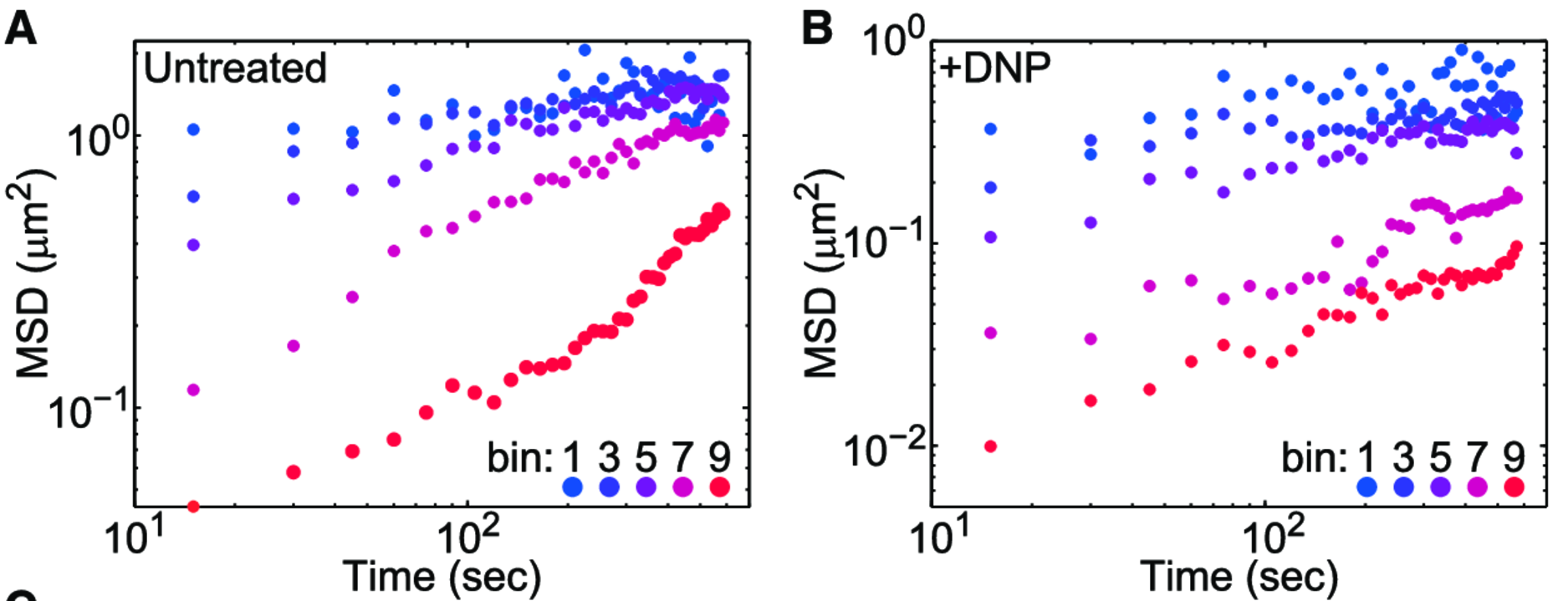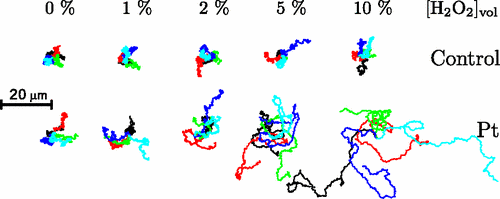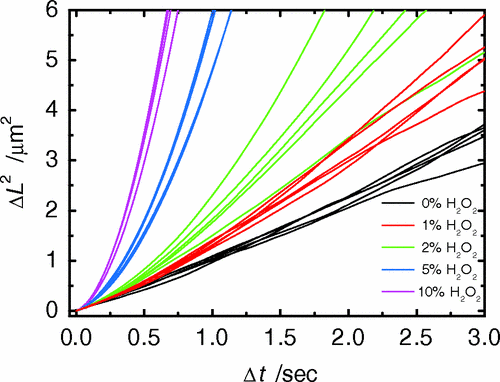
The Cytoplasm and
Active Matter
Wendell Smith
The Cytoplasm
Active Cells | Inactivated Cells: metabolism blocked by biochemical means |

Particles in the cytoplasm diffuse much faster when the cell is metabolically active, by a factor of \(\sim 5-10 \)
Can metabolic “noise” lead to a difference in dynamics?
Cells are active, non-equilibrium systems
Chemical reactions are constantly consuming energy
Do these reactions raise the effective temperature?
Studying Active Matter
Active Matter is composed of self-driven units, active particles, each capable of converting stored or ambient free energy into systematic movement [2]
Active matter is an active field of research
Much of it is concerned with studying bird flocks, fish schools, and bacterial swarms, but occasionally considers non-living particles
Most studies use responsive and/or directed particles
Janus Particles

Janus Particle Trajectories in varying concentrations of H2O2
Half of each particle is coated with platinum, which catalyzes \(2 \mathrm{H_2 O_2 \rightarrow 2 H_2 O + O_2}\) on only one side
This reaction pushes the particles asymmetrically due to the local osmotic pressure gradient [1]
Janus Particles

Particles in H2O2 move much farther
\[ \begin{align*} MSD(t) &= \left< \Delta \vec r^2 \right>\\ &= \left< \vec r(t)^2 - \vec r(0)^2 \right> \end{align*} \]
Persistent Motion
Self-propelling particles are typically modeled with "persistent motion": propulsion along some axis of the particle
In eukaryotic cells, molecular motors are known to cause cytoplasm "mixing"
This mechanism is not expected to exist in E. coli
Biological Considerations
Metabolic activity does not significantly raise the temperature of the cell (right?)
ATP, the main energy source of metabolism, has energy \(E_\mathrm{ATP} \sim 20 k_B T\)
Metabolic activity would not have a rotational orientation
Simulating Metabolism
Langevin thermostat \[ \vec F = -\vec \nabla U - \gamma \vec v + \vec \Gamma_T + \vec \Gamma_k\left(t\right) \]
WCA potential / repulsive Lennard-Jones for \(U\)
Damping \(\gamma\) to simulate solution viscosity
Random, instantaneous "kicks" to the particles
\(\vec \Gamma_T\) for the thermostat; balanced by \(\gamma\)
\(\vec \Gamma_k\) for metabolism
Random Kicks
| Thermostat | Metabolism |
|---|---|
|
|
Simulation
Without Activity | With Activity |
Considerations
| \(\phi\) | the packing fraction |
| \(T_0\) | the thermostat temperature |
| \(\gamma\) | the thermostat damping rate |
| \(E_k\) | the kick magnitude |
| \(f_k\) | the kick frequency
|
Simulation
\(f\) is the kick frequency, T is the measured temperature
Kicks that are too frequent raise the temperature
Simulation, Larger Kicks
\(f\) is the kick frequency, T is the measured temperature
Kicks that are too frequent raise the temperature
Acknowledgments
Corey O’Hern, Mark Shattuck, Christine Jacobs-Wagner
Brad Parry, Ivan Surovtsev, Eric Dufresne, and everyone I talked to
Sackler, PEB, and HHMI